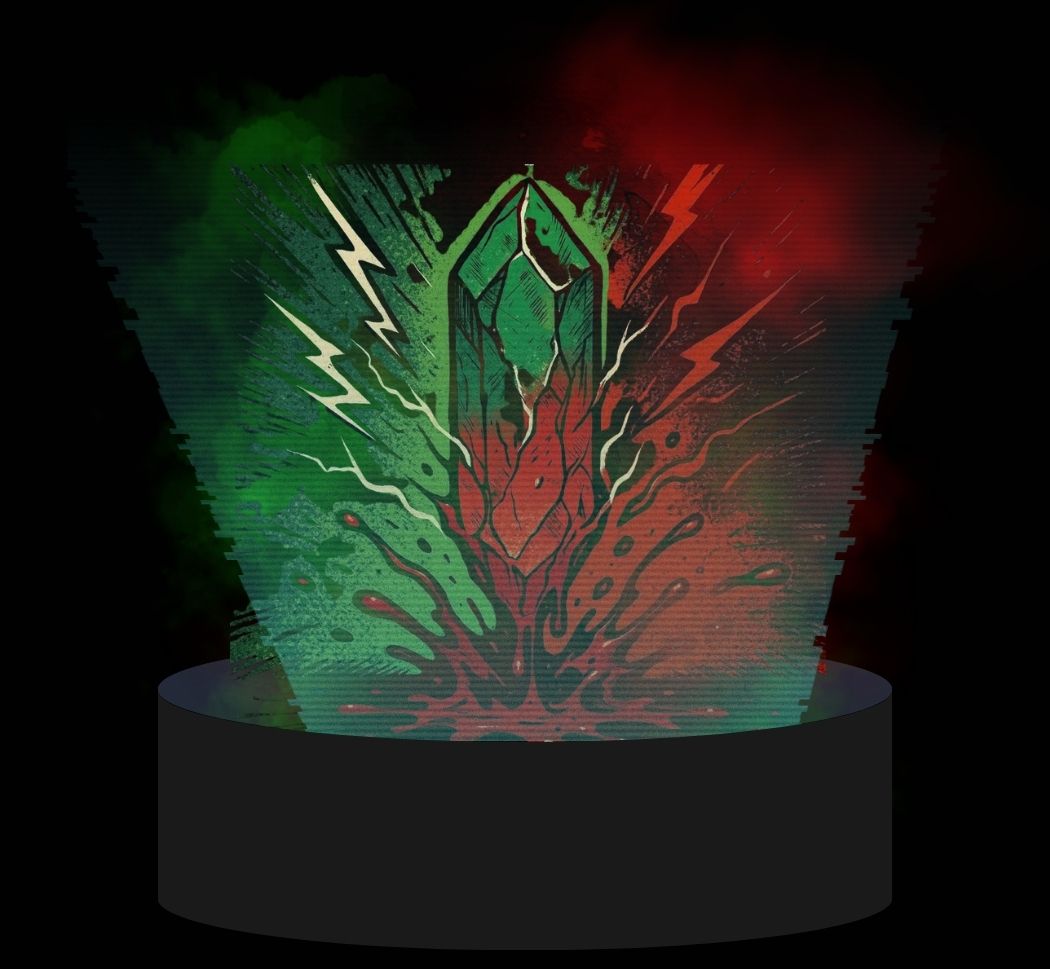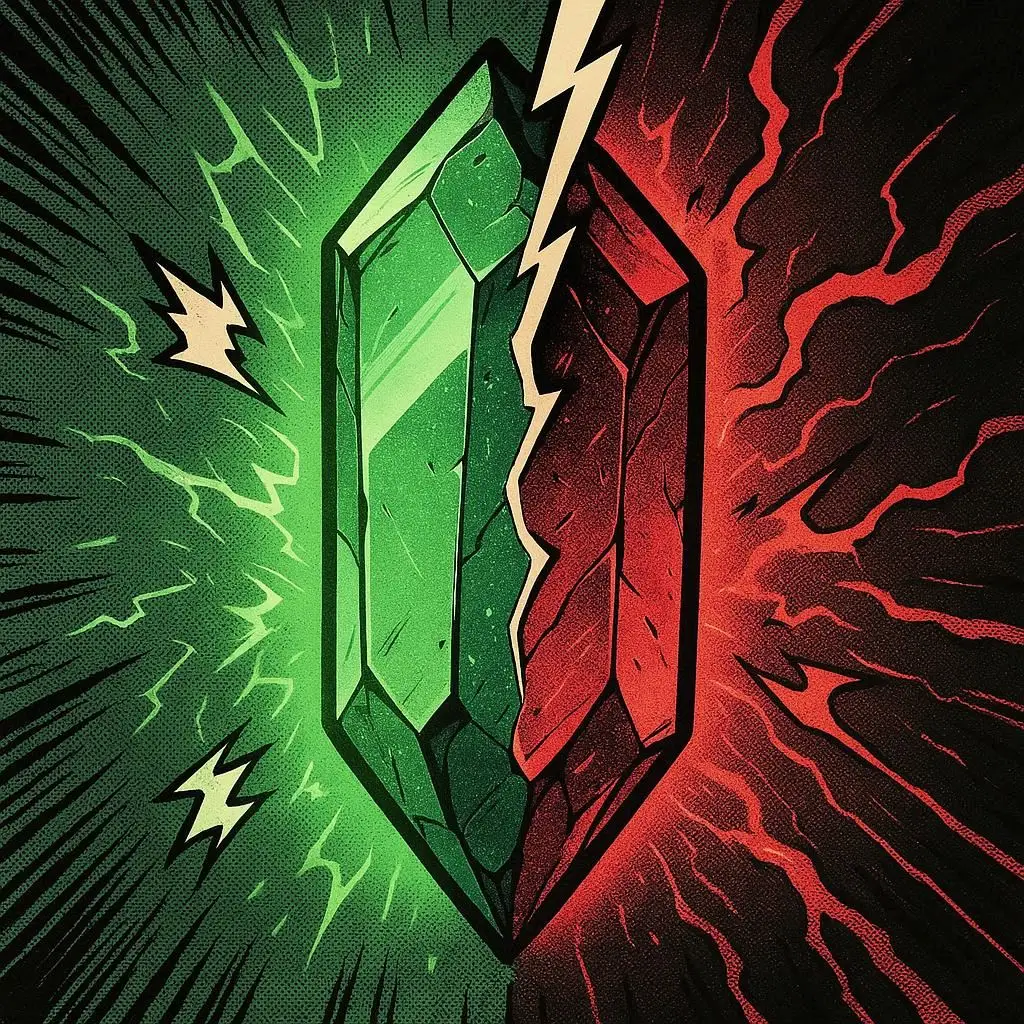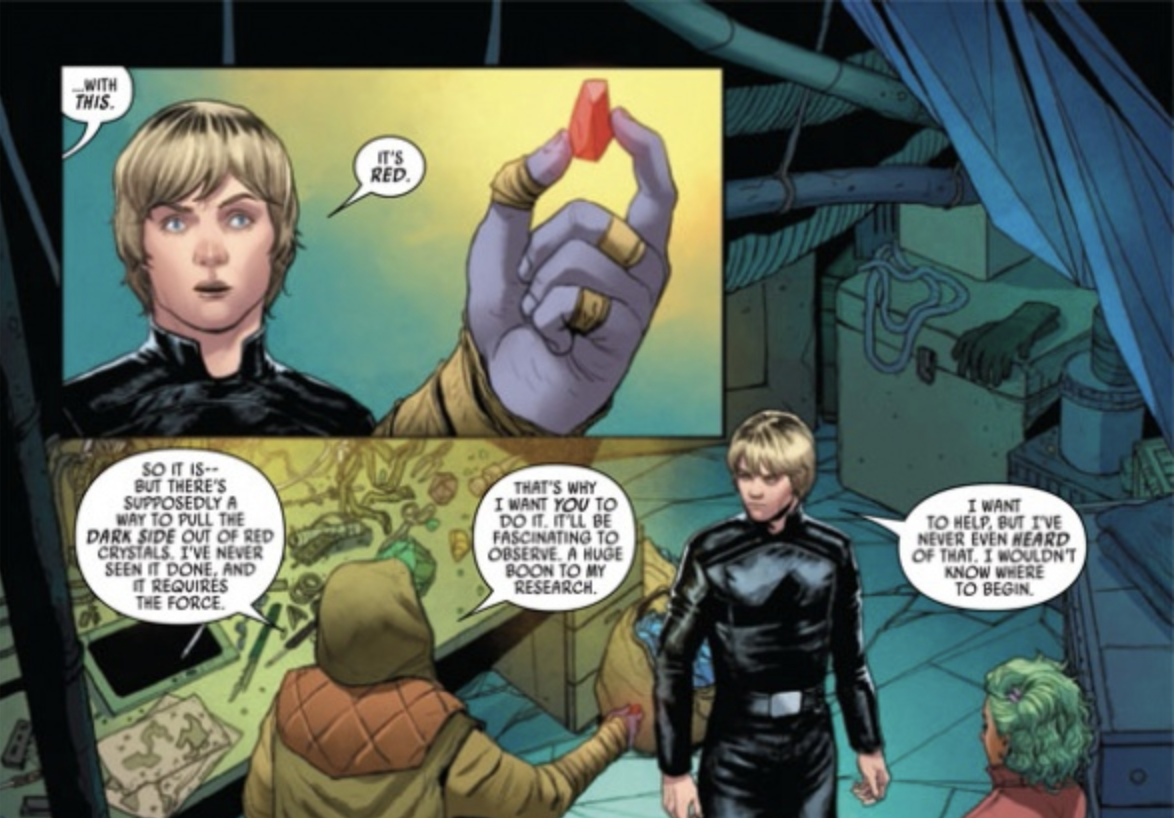Everything You Need to Know About the Mystery of Bleeding Kyber Crystals

Kyber crystals, living conduits of the Force, power every lightsaber and reflect their wielder’s bond with the Force. Sith corrupt them through “bleeding,” pouring rage and pain into the crystal until it turns red, symbolizing domination and suffering. From ancient Sith rituals to Darth Vader’s crimson blade and Luke Skywalker’s rare act of purification, bleeding kyber crystals embody the eternal struggle between corruption, redemption, and balance in the galaxy.
Everything You Need to Know About the Mystery of Bleeding Kyber Crystals
The galaxy is rich with stories of the Force, and at the heart of many of them lies the enigmatic kyber crystal.

These rare crystals are more than simple gems; they are living conduits attuned to the energy of the universe. Yet among the many mysteries surrounding them, few are as unsettling and powerful as the act of bleeding.
To explore this phenomenon is to step into the shadowy corners of history, where purity and corruption collide in the crimson glow of a lightsaber.
Fundamentals of Kyber Crystals
Kyber crystals serve as the foundation for nearly all lightsabers across the galaxy. Their connection to the Force is profound, shaping not only the weapon but also reflecting the identity of the wielder.

Before understanding how they can be corrupted, it is important to establish what they are and why they hold such significance to Jedi, Sith, and all Force-sensitive beings.
Defining Kyber Crystals
Kyber crystals are attuned to the Force, resonating with its energy in a way that no other mineral in the galaxy does.
They are found on sacred worlds such as Ilum and Jedha, where they remain hidden until sought out by those strong enough to hear their call. To a Jedi, the crystal does not simply exist as a tool; it speaks, guiding them toward its selection.
This living quality makes them unique, binding them to a wielder as if by destiny.
The Role and Importance of Kyber Crystals
The significance of kyber crystals extends beyond powering a lightsaber. They represent harmony and balance, amplifying the Jedi’s connection to the Force while maintaining a symbiotic bond.
The colors they reveal—most often blue or green—stand as reflections of the Jedi’s spirit and chosen path. To the Jedi, a crystal is not simply a piece of weaponry, but a partner in their life’s journey through the Force.
Revealing the Crimson Truth: The Act of Bleeding Kyber Crystals
Bleeding transforms a kyber crystal from a symbol of balance into a weapon of domination. Unlike the natural resonance found between Jedi and crystal, bleeding relies on subjugation—an act of will that forces the crystal to suffer until it turns crimson.
This practice, steeped in pain and hatred, has become synonymous with the Sith and their relentless pursuit of power.
Understanding the Bleeding Process
The process of bleeding is as brutal as it is unnatural. By pouring rage, anguish, and fear into the crystal, a Sith severs its bond to the light and twists it into something broken.
The crystal’s living essence resists, screaming in torment, but once it succumbs, it is permanently scarred. The resulting crimson hue is not merely a color—it is the mark of suffering crystallized in light.
Tracing the History of Kyber Crystal Bleeding
Bleeding is not a modern invention but a legacy born in ancient times. The practice has appeared across different eras of galactic history, shaping the battles between Jedi and Sith.
Understanding how it has manifested across generations sheds light on why the red blade became the iconic symbol of the dark side.
The First Emergence of Kyber Crystal Bleeding
The origins of bleeding can be traced to the earliest conflicts between light and dark Force users.
The Sith, in their pursuit of domination, discovered they could impose their will upon the crystal rather than listening to it.
This act became a ritual of conquest, solidifying their rejection of balance and cementing their philosophy of control.
Pre-Empire Period
Long before the Empire rose, bleeding was a rare but devastating act. During the High Republic, figures such as Dagan Gera showed how deeply personal and destructive bleeding could be.

His once-golden blade became crimson, marking not just his fall but also the sorrowful reminder of how quickly hope can turn into corruption.
Age of the Empire
The Empire transformed bleeding from a rare act into a widespread practice. With Sith Lords like Darth Vader leading the way, red blades became the standard weapon of oppression.
Vader himself bled a captured Jedi’s crystal, binding his hatred to it until it glowed scarlet, forever symbolizing his break from Anakin Skywalker.
The Inquisitorius and Its Dark Inheritance
The Inquisitors, recruited from fallen Jedi, bled their crystals under the supervision of the Sith. Their crimson sabers symbolized betrayal, corruption, and submission to darkness.
To see a once-Jedi wielding a red blade was to face the terrifying reality of what failure and fear could produce.
The Defining Choice of Dagan Gera
Dagan Gera’s bleeding of his crystal represents one of the most tragic personal accounts of this practice.
Overwhelmed by anger at the Jedi Council’s decisions, he shattered the harmony of his weapon, corrupting its essence.
His decision serves as a reminder of how fragile the bond between Jedi and kyber truly is when resentment takes root.
Luke Skywalker’s Redemptive Encounter
Luke Skywalker offered proof that the corruption of a crystal was not absolute. By reaching out with compassion, he restored a bled crystal to purity, turning its pain into peace.

His act demonstrated the resilience of light and the possibility of redemption even in the face of deep corruption.
The New Republic: Balancing Redemption and Shadows
In the New Republic era, bleeding became less visible but never forgotten. Tales of redemption, alongside lingering shadows of Sith influence, kept the practice alive in galactic memory.
This duality—between scarred crystals and healed ones—mirrored the galaxy’s own struggle between darkness and light.
Outcomes and Repercussions of Bleeding
Bleeding leaves permanent scars on both crystal and wielder. The act creates instability within the crystal, manifesting in the blade itself and echoing the turmoil of its master.

To understand the consequences of bleeding is to recognize that power achieved through domination comes at an eternal cost.
The Alteration of a Kyber Crystal
Once bled, a crystal’s resonance changes forever. It no longer hums in harmony but wails in agony, reflected in the unstable energy of its blade.
These crystals are distorted echoes of what they once were, physical embodiments of corruption.
How Bleeding Alters the Connection to the Force
Forcing a crystal to bleed damages the wielder’s relationship with the Force. Instead of mutual guidance, the connection becomes a chain of domination.
While this allows for destructive power, it severs the natural flow of balance, leaving the wielder bound to rage and fear.
Key Distinction Between Sith and Fallen Jedi in Crystal Bleeding
The difference between Sith and fallen Jedi lies in intent. Sith see bleeding as conquest, a rite of strength.
Fallen Jedi, however, often turn to bleeding as a final act of despair. Though the outcome is the same, the paths they take to reach it are deeply personal.
The Link Between Bleeding and Lightsaber Creation
For the Sith, bleeding often coincides with constructing a new saber, embedding domination into the weapon itself.
For fallen Jedi, it is usually a desperate act of transformation after their old identity has been shattered.
The Jedi Order’s View on Bleeding Kyber Crystals
The Jedi viewed bleeding as a tragic corruption of the Force. To them, it represented the ultimate perversion of something meant to embody harmony, serving as both a warning and a sorrowful reminder of what happens when balance is lost.
The Sith Order’s View on Bleeding Kyber Crystals
In contrast, the Sith celebrated bleeding as proof of strength. To dominate a crystal was to prove superiority over the Force itself, turning the red blade into a symbol of fear and conquest.
To them, a bled crystal was more than a weapon—it was a badge of honor, a declaration that they had broken the will of a living entity and bent it to serve their own. This act embodied the Sith philosophy of dominance, rejecting harmony in favor of subjugation.
Every crimson blade carried with it the echo of torment, serving as both a personal triumph for its wielder and a psychological weapon against their enemies.
The sight of a red lightsaber was designed to instill dread, a reminder that the one who carried it had chosen the path of destruction and had the power to enforce it without hesitation.
The Peril of Kyber Crystal Bleeding Examined
Bleeding carries inherent risks. A crystal may resist to the point of self-destruction, harming its wielder in the process.
The instability of a bled crystal’s energy further endangers those who wield it, making the practice both dangerous and unpredictable.
Is Kyber Crystal Bleeding Part of Canon?
Kyber crystal bleeding is firmly established within Star Wars canon. It has been depicted in stories about Darth Vader, the Inquisitors, and Luke Skywalker’s attempt at purification, solidifying it as part of the modern lore.

Its presence across multiple eras and characters underscores its importance, not merely as a dark ritual, but as a symbolic thread woven into the greater saga of the Force. Vader’s agonizing corruption of his crystal highlights the personal toll of surrendering to the dark side, while the Inquisitors’ red blades stand as constant reminders of their servitude to the Empire.
On the opposite end, Luke’s effort to restore purity illustrates the resilience of the light, giving balance to the narrative. Together, these depictions confirm that bleeding is more than just a myth whispered in old Jedi texts—it is a living reality in the galaxy, one that continues to shape destinies and fuel the ongoing battle between shadow and illumination.
Restoring a Kyber Crystal
Restoration of a bled crystal, though rare, is possible. Unlike bleeding, this act relies on empathy and connection, requiring the wielder to heal rather than dominate.
Can a Crystal Be Restored After Bleeding?
Yes, but only under extraordinary circumstances. Restoration demands immense compassion and the ability to confront both the crystal’s pain and one’s own.
Practices and Rituals for Healing Kyber Crystals
Healing is achieved by embracing the crystal with pure light. Through meditation, compassion, and a willingness to listen, a Jedi may guide the crystal back to balance.
Rare Cases of Fully Purified Crystals
Luke Skywalker’s purification remains the most famous example, though whispers of other successes exist.
These moments show that even in the darkest times, healing is possible. Luke’s act did more than cleanse a corrupted crystal—it symbolized the resilience of hope against despair.

His success reaffirmed that the Force is not static, but a living current capable of renewal when approached with compassion and clarity.
Legends also speak of lesser-known Jedi who attempted similar redemptions, often in secret, suggesting that purification was a practice of faith as much as skill. Each restored crystal carried a story of struggle and perseverance, testifying that light can reclaim ground once surrendered to the shadows.
Is It Possible to Bleed a White Kyber Crystal?
White kyber crystals emerge from purification, their brilliance symbolizing balance.

To bleed such a crystal would mean corrupting something already healed, an act so rare and extreme that no known accounts confirm its success.
Final Thoughts
The bleeding of kyber crystals stands as one of the darkest practices in galactic history. Yet within its shadow lies the lesson that corruption, though powerful, can sometimes be reversed.
The crimson glow serves as both a warning and a reminder: the choices made by Force wielders shape not only themselves but the very energy of the galaxy. Each bled crystal is a scar upon the Force, a reflection of pain and domination, but also a testament to the enduring possibility of change.
Just as the crystal can be forced into silence, it can also be coaxed back into harmony, mirroring the eternal struggle between light and dark within every being.
The legacy of bleeding reminds us that power without compassion leads only to ruin, while the act of healing offers the promise of renewal, not only for the crystal itself but for the one who dares to seek redemption.
Frequently Asked Questions
Can a Kyber Crystal Turn Red Without Bleeding?
No. A kyber crystal turns red only through the act of bleeding, making crimson blades inseparable from corruption.
What Method Did Vader Use to Bleed His Crystal?
Vader bled a crystal taken from a slain Jedi, forcing his anguish and rage into it until it surrendered and turned red.
Is It Possible for Kyber Crystals to Melt?
Under extreme conditions, kyber crystals can fracture or even liquefy, though such events are rare and catastrophic.
Why Does Dagan Gera Choose to Bleed His Crystal?
His decision stemmed from betrayal and anger at the Jedi Council, leading him to pour his hatred into the crystal and corrupt it.
Is a Kyber Crystal Capable of Breaking?
Yes, though their durability is extraordinary. When broken, the resulting energy release can be volatile and dangerous.
Does Bleeding a Kyber Crystal Increase Its Power?
Bleeding does not make a blade inherently stronger, though the instability it creates can make the saber’s energy more erratic and dangerous.
What Determines the Color a Kyber Crystal Takes On?
The color arises from the wielder’s bond. Jedi usually produce blue or green, while bleeding forces crimson.
Is the Darksaber Capable of Being Bled?
Theoretically, yes. Since the Darksaber is powered by a kyber crystal, it could be bled, though no record of such an event exists.














